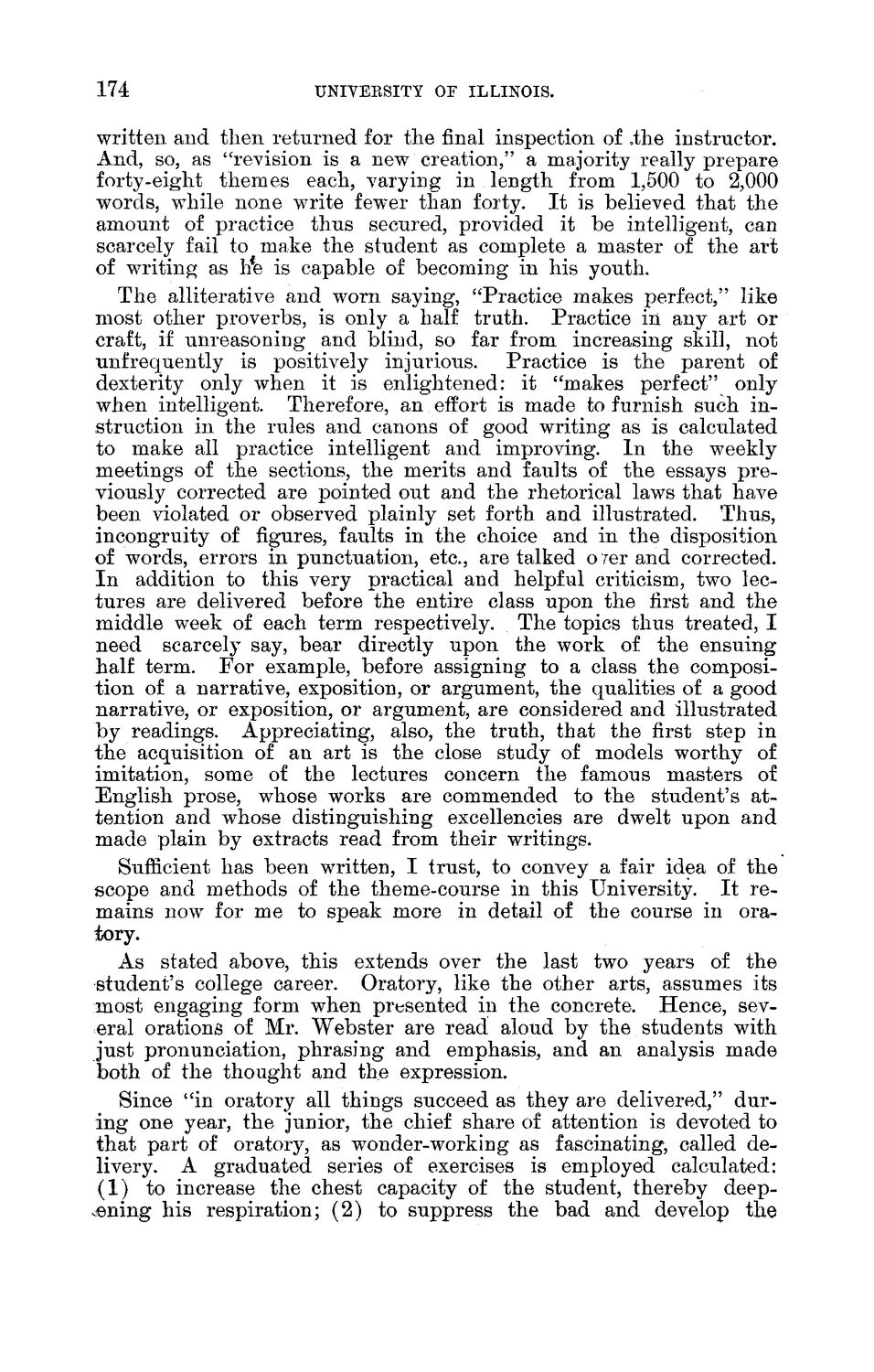| |
| |
Caption: Board of Trustees Minutes - 1888
This is a reduced-resolution page image for fast online browsing.

EXTRACTED TEXT FROM PAGE:
174 UNIVEESITY OF ILLINOIS. written and then returned for the final inspection of i h e instructor. And, so, as "revision is a new creation," a majority really prepare forty-eight themes each, varying in length from 1,500 to 2,000 words, while none write fewer than forty. I t is believed that the amount of practice thus secured, provided it be intelligent, can scarcely fail to make the student as complete a master of the art of writing as h*e is capable of becoming in his youth. The alliterative and worn saying, "Practice makes perfect," like most other proverbs, is only a half truth. Practice in any art or craft, if unreasoning and blind, so far from increasing skill, not unfrequently is positively injurious. Practice is the parent of dexterity only when it is enlightened: it "makes perfect" only when intelligent. Therefore, an effort is made to furnish such instruction in the rules and canons of good writing as is calculated to make all practice intelligent and improving. In the weekly meetings of the sections, the merits and faults of the essays previously corrected are pointed out and the rhetorical laws that have been violated or observed plainly set forth and illustrated. Thus, incongruity of figures, faults in the choice and in the disposition of words, errors in punctuation, etc., are talked o rer and corrected. I n addition to this very practical and helpful criticism, two lectures are delivered before the entire class upon the first and the middle week of each term respectively. The topics thus treated, I need scarcely say, bear directly upon the work of the ensuing half term. For example, before assigning to a class the composition of a narrative, exposition, or argument, the qualities of a good narrative, or exposition, or argument, are considered and illustrated by readings. Appreciating, also, the truth, that the first step in the acquisition of an art is the close study of models worthy of imitation, some of the lectures concern the famous masters of English prose, whose works are commended to the student's attention and whose distinguishing excellencies are dwelt upon and made plain by extracts read from their writings. Sufficient has been written, I trust, to convey a fair idea of the scope and methods of the theme-course in this University. I t remains now for me to speak more in detail of the course in oratory. As stated above, this extends over the last two years of the student's college career. Oratory, like the other arts, assumes its most engaging form when presented in the concrete. Hence, several orations of Mr. Webster are read aloud by the students with just pronunciation, phrasing and emphasis, and an analysis made both of the thought and the expression. Since "in oratory all things succeed as they are delivered," during one year, the junior, the chief share of attention is devoted to that part of oratory, as wonder-working as fascinating, called delivery. A graduated series of exercises is employed calculated: (1) to increase the chest capacity of the student, thereby deepening his respiration; (2) to suppress the bad and develop the
| |